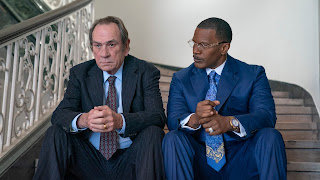How Spielberg created John Hammond's vision on screen
"Yeah, yeah, but your scientists were so preoccupied with whether or not they could that they didn't stop to think if they should." — Dr. Ian Malcolm, "Jurassic Park."
"Jurassic World," the re-imagining of "Jurassic Park," opened yesterday. It made more than $87 million on opening day, and is on the way to setting a June record. It's a great summer popcorn flick that's open-ended enough to jump start the franchise. In fact, star Chris Pratt has said he's signed on for sequels, so we can reasonably expect to see a few more.
It is a fine movie, and I enjoyed it. It's one of the better blockbusters so far this summer. But, at the same time, I can't help but think that writer Michael Crichton — who authored "Jurassic Park" — would be rolling over in his grave if he saw this latest film. That's because from the time Steven Spielberg adapted that book to the big screen, there was a fundamental misunderstanding of what it was about.
Sure, "Jurassic Park" featured dinosaurs. In some ways, it's a disaster story with pre-historic creatures that pose a real threat. But at its heart, "Jurassic Park" is a story about what happens when men try to play God.
In the book, John Hammond is an idealist, yes, but he's also a capitalist that fails to recognize the limit of human achievement. His park unspools, and he suffers the consequences. Hammond is literally consumed for his hubris, the island is destroyed by authorities, and the whole thing is covered up to prevent anyone from trying something so stupid again.
In the film, Hammond is a misguided idealist, too, who wants — nobly — to give the world something its never seen. Even when things go awry, he's determined to get it right — eventually. He talks about how to make things better, and Dr. Ellie Sattler confronts that foolishness with a reminder about control.
"You never had control, that's the illusion! I was overwhelmed by the power of this place. But I made a mistake, too, I didn't have enough respect for that power and it's out now. The only thing that matters now are the people we love. Alan and Lex and Tim. John, they're out there where people are dying."
But Hammond doesn't die. He lives, and his dream lives along with him. What he wanted for Jurassic Park was something real. He says, "But with this place, I wanted to show them something that wasn't an illusion. Something that was real, something that they could see and touch. An aim not devoid of merit."
In "The Lost World," Spielberg's follow up film, the gap between the purpose of the source material and the world of the films widens. Hammond is alive, and he directs Malcolm back to site B as a means of preserving these creatures. He's still focused on his idea that's "not devoid of merit."
And that's how we get to "Jurassic World." It's 22 years later, and Hammond's vision has been realized. Isla Nublar is a fully functioning tourist attraction. Thousands flock to the island each day to see these creatures. It is faithful to Hammond's vision — though he is long gone — but not to the vision of Michael Crichton's work.
In fact, rather than a commentary of the limits of human achievement, "Jurassic World" seeks to make a commentary on our culture. InGen — largely represented by Dr. Wu (B.D. Wong) and his genetic manipulation — is a nefarious corporation, yes. But it's because of what the people demand. The government needs a more effective killing machine — so enter Velociraptors.
People need bigger, larger, more lavish entertainment, so enter Indominus Rex. It's meant to be a commentary against the way the public decries the rise in violence and lavish 3D effects, while needing those increases to be made to care about new projects laid before them. It's an interesting idea and argument, but it misses the heart of the story.
Instead of a fascinating meditation on scientific achievement, "Jurassic World" is Godzilla in a theme park with a dash of Kurt Cobain's distain for the audience splashed on top. It's a fun summer blockbuster, but it pales in comparison to the depth of the original.




Comments
Post a Comment